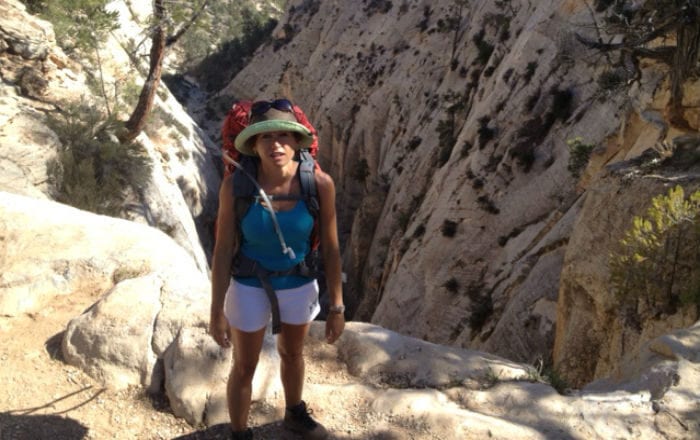
COVID-19 questions: Where’s the beef and What’s Next?
So, now it’s meat.
Just as I was celebrating my latest acquisition – the last four-pack of generic bathroom tissue – I rolled my way over to the meat aisle, only to find a few sad, lonely leftovers. There was a butt roast, a package of sausage and a pair of pork chops. That was about it.
COVID-19 is taking a toll on the country’s meat processing plants. A Smithfield plant in South Dakota was forced to close after hundreds of its employees tested positive for coronavirus. Other plants throughout the country are also closing. Bottom line: If the processing plants close, the meat doesn’t get to your grocery store.
I was just coming to grips with the prospect of resorting to a toilet paper substitute. I never considered life without burgers or bacon.
Yes, no ground beef might be a small-potatoes inconvenience for experienced food shoppers, but for the inexperienced and reluctant, it only deepens the mystery of the grocery store.
There are now blue arrows on the floor. One aisle goes north, the next goes south. No U-turns. If you want out, you either play through or back out illegally, which I tried and almost took out a display shelf full of Oreos.
There are now employees without uniforms stocking shelves. The other day, I found myself with five cans of the wrong diced tomatoes. As I was putting them back, a woman wearing a mask, approximately six feet behind me, asked me if there was any baking soda.
“Yeah, one aisle over.”
I admit I’m having a difficult time staying six feet away from others, mainly because it’s hard to judge distance while people are moving around. So, I overcompensate and treat people as if they’re radioactive. If someone rolls up behind me, I quicken my step. If they’re gaining on me, I break into a trot.
In the grand scheme of a pandemic, navigating the supermarket isn’t a big deal, confusing as it might be. But it is representative of a question this pandemic continues to beg: What’s next?
People are growing impatient.
On Wednesday, protestors surrounded the state capital in Michigan to protest the governor’s draconian stay-at-home orders.
Some 15 million Americans have lost their jobs during the current pandemic. The number will continue to go up as long as the country remains shut down. We’re quickly getting to the point where the risk of contracting coronavirus will be worth taking if the alternative is not being able to put food on the table or pay your bills.
Small businesses are drowning. The guy who owns my gym is now delivering pizzas to make ends meet.
Americans across the country have been arrested and/or fined for violating social distancing orders.
California Gov. Gavin Newsom announced Wednesday that he’ll be giving stimulus checks to immigrants who are in the country illegally.
New York Governor Andrew Cuomo signed an executive order Wednesday requiring everyone to wear face coverings in public.
Local governments are releasing thousands of inmates.
This is not sustainable for much longer and Americans should not have to accept any version of such new rules and restrictions as a “new normal” as we’ve heard far too often in the last month.
No one in charge, Republican or Democrat, should be willing to concede – as some experts have predicted – 16 percent unemployment by July.
An economic collapse of such magnitude will only invite the government to fill the void. If you think that’s something you want, consider the delay getting those relief checks in the mail.
What’s the answer? Beats me. That’s why we have elected officials to figure this stuff out. President Trump and the governors need to work together and come up with a plan to reopen the economy and they need to work fast.
This is not a matter of choosing between, as Cuomo said in one of his recent media briefings, “public health and economic activity.” The latter term trivializes the depth of the economic component of this crisis. There’s a big difference between “economic activity” and financial ruin, which scores of Americans are facing at this very moment.
We can come up with a nuanced approach that will allow Americans to get back to work while keeping them as safe as possible.
If we don’t find such a solution, we’ll be asking “What’s next?” a month from now. And we’re not going to like the answer.
–
Copyright 2020 Rich Manieri, distributed by Cagle Cartoons newspaper syndicate.
Rich Manieri is a Philadelphia-born journalist and author. He is currently a professor of journalism at Asbury University in Kentucky. His book, “We Burn on Friday: A Memoir of My Father and Me” is available at amazon.com. You can reach him at manieri2@gmail.com.
Viewpoints and perspectives expressed throughout The Independent are those of the individual contributors. They do not necessarily reflect those held by the staff of The Independent or our advertising sponsors. Your comments, rebuttals, and contributions are welcome in accordance with our Terms of Service. Please be respectful and abide by our Community Rules. If you have privacy concerns you can view our Privacy Policy here. Thank you!
Click here to submit an article, guest opinion piece, or a Letter to the Editor




